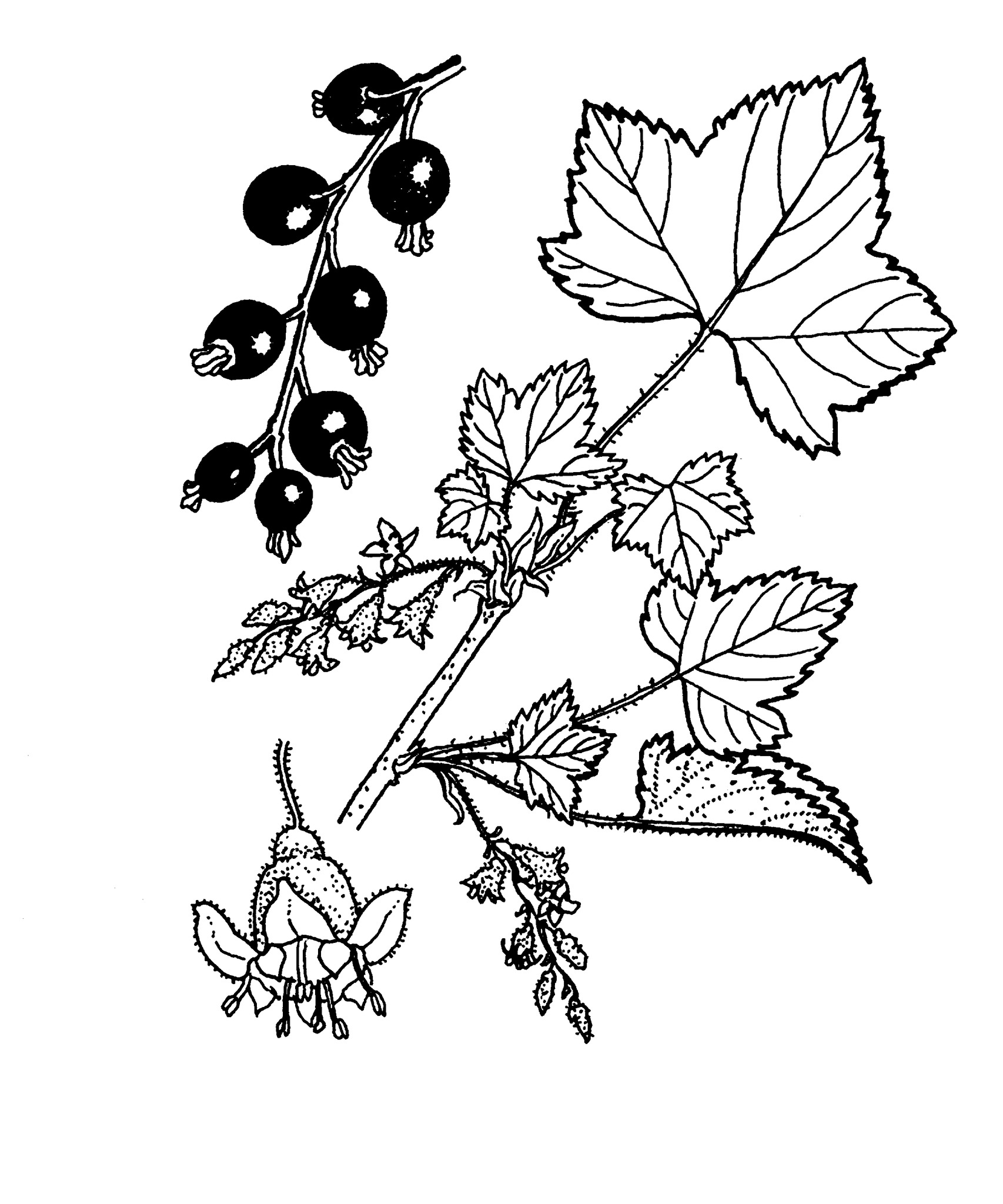
Broad shrub to about 2 m tall, the branches and leaves with aromatic glands, shoots downy at first. Leaves 5-10 cm wide, 3-5-lobed. Flower cluster pendulous, downy. Flowers 4-10, bell-shaped, green outside, red and white inside; late spring to early summer. Fruit globose, black and edible.
This is the edible Black Currant, grown for its flavour, colour and high vitamin C content.The wild berries would have been gathered in prehistoric times but breeding and selection have been relatively recent. There is a range of ornamental cultivars with leaves of different colours and shapes, and fruits of various colours. Black Currants probably arrived in Australia with the early settlers. Cultivars used for commercial production have been selected for high yield, acceptable growth habit and resistance to pests and diseases. Larger plantations occur only in Tas, mainly in the Derwent Valley N of Hobart.The most popular cultivar is 'Whitebud', which is a small bush amenable to mechanical harvesting and resistant to frost, although the cultivars 'Goliath' and 'Hattons Black' are also grown. New cultivars may be imported from New Zealand.
R. americanum Mill., American Black Currant (Wild Black Currant), from the N USA is occasionally cultivated and differs in having large yellowish white flower clusters with longer floral bracts.
Eurasia.
Source: (2002). Grossulariaceae. In: . Horticultural Flora of South-eastern Australia. Volume 3. Flowering plants. Dicotyledons. Part 2. The identification of garden and cultivated plants. University of New South Wales Press.
